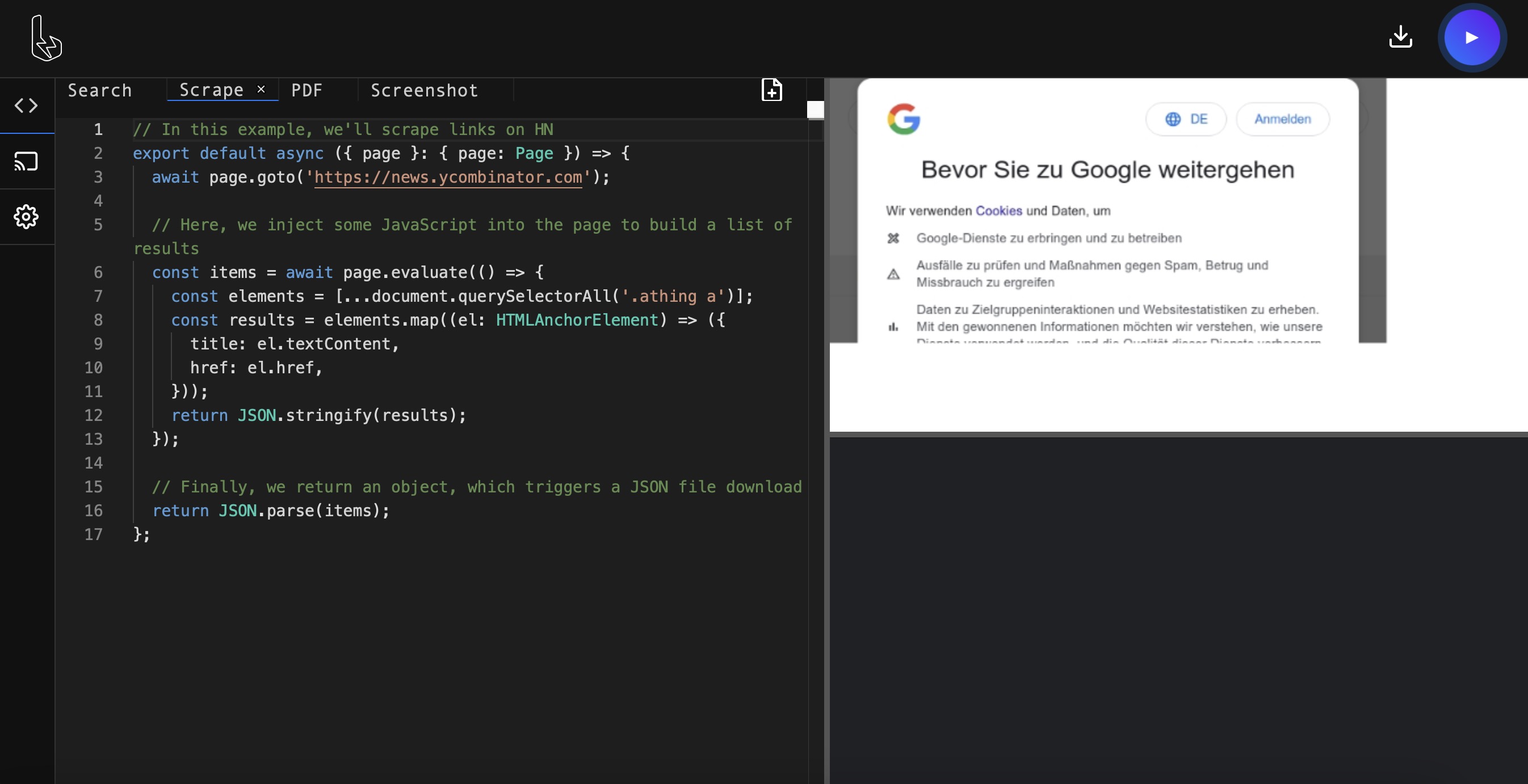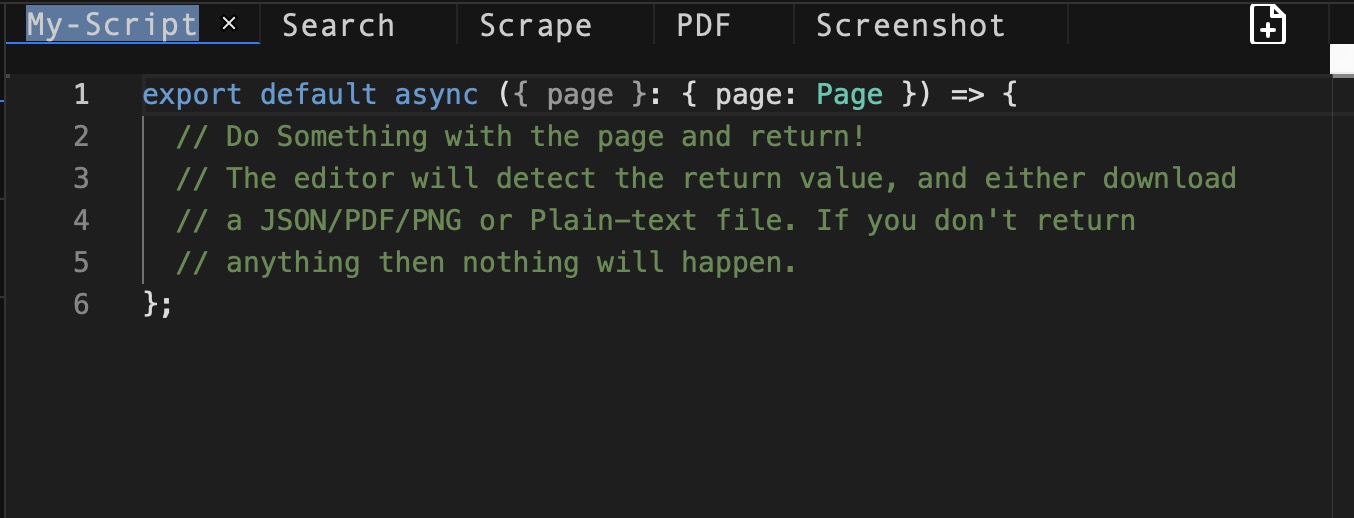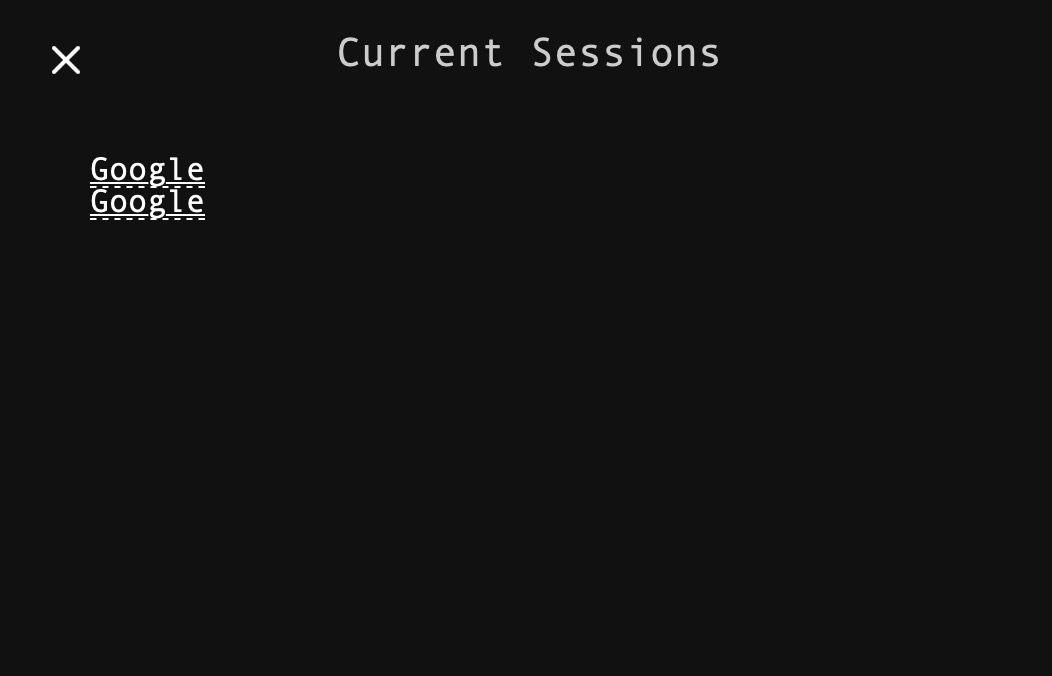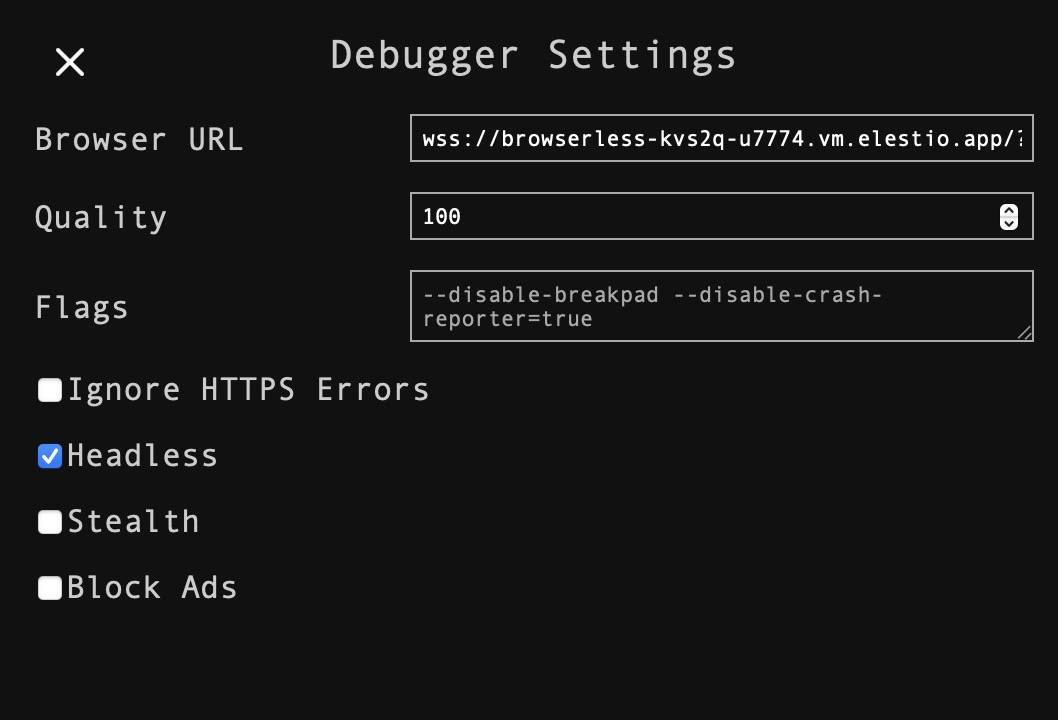Browserless is an open source tool that allows you to interact with web pages and perform various tasks without the need for a traditional web browser. It's commonly used in headless browser scenarios, where you want to automate web related processes without a graphical user interface. This is helpful for tasks like web scraping, automated testing, or running browser based scripts in an efficient manner.
Search Scripts
The search feature in Browserless refers to the capability of the tool to query and interact with search engines programmatically. This can be useful for tasks such as automated search results, monitoring search engine rankings, or performing custom searches through scripts. Essentially, it allows you to use Browserless to handle search related actions without the need for manual intervention.

Scraping Scripts
The scrape feature in Browserless helps with its ability to extract data from web pages in an automated way. This functionality is particularly useful for web scraping tasks, where you want to gather information from websites automatically. With Browserless, you can write scripts or programs that navigate through web pages, locate specific elements, and extract relevant data.

PDF Generation & Conversions
The PDF feature in Browserless is used to generate PDFs from web pages. With this functionality, you can automate the process of converting web content into PDF format. This can be useful for tasks such as archiving web pages, creating reports, or saving online content for offline viewing. Browserless allows you to script the PDFs generation from web pages, providing a convenient way to capture and store information in a more portable and shareable format.

Screenshot Of Web Page
The screenshot feature in Browserless allows you to capture images of web pages programmatically. This functionality is valuable for tasks like website monitoring, automated testing, or generating visual documentation of web content.

Creating New Script
By writing your own scripts in Browserless, you can automate various web related tasks, saving time and minimizing the potential for manual errors. This approach offers flexibility to customize the script according to your specific requirements. You can adapt the script to handle dynamic web content and achieve your automation goals. Additionally, you get to choose what tasks you want to automate and how you want to do it, giving you greater control over the process.

Current Sessions
The current session in Browserless is an active browser session that is being managed by the Browserless service. When you initiate a session, it means that a browser instance is opened, and you can interact with it using scripts or commands. This session allows you to perform various tasks within the context of that specific browser instance. Managing sessions in Browserless provides a way to maintain state and continuity in your interactions with web pages, allowing you to carry out tasks across multiple steps or actions within the same browsing environment.

Debugger Settings
The debugger setting in Browserless typically refers to the configuration options related to debugging scripts or code running in the browser. Browserless may provide settings or features that allow you to inspect, analyze, or troubleshoot the execution of your scripts. By having debugger settings in Browserless, you gain greater control and visibility into the behavior of your scripts.
